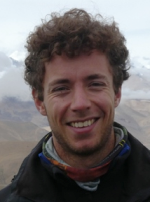The PhD defence and trial lecture are fully digital and streamed using Zoom. The host of the session will moderate the technicalities while the chair of the defence will moderate the disputation.
Trial lecture
Mantle contributions to lithospheric strain
Conferral summary (in Norwegian)
Mikrokontinenter er kontinentfragmenter dannet i subduksjonssystemer flere steder i verden. Deres dannelse er paradoksal da de blir til ved to motstridende krefter; subduksjon somer en konvergerende prosess, mens mikrokontinenter trenger ekstensjon for å bli til. Denne ph.d. avhandlingen viser at mikrokontinenter kan dannes i komplekse subduksjonssystemer når pre-eksisterende svakhetssoner i vertskontinentet er til stede, og når rotasjonsbevegelser, indusert av subduksjonen, lager en lokal ekstensjon.
Main research findings
Popular scientific article about van den Broek’s dissertation:
The role of subduction in the formation and evolution of continental fragments and microcontinents
Microcontinents are small continental pieces that have been separated from their parent continent. We often find such microcontinents in oceans that form after the breakup of a large continent (e.g. the North Atlantic, forming c. 56 million years ago). Understanding microcontinent formation leads to a better understanding of plate tectonics. This is important because plate tectonics influences numerous other processes such as climate change and natural hazards.
However, in recent years various microcontinents have been identified that have formed in subduction settings. Subduction is a convergent process wherein one tectonic plate moves underneath another. However, microcontinents require divergent motion to separate from their parent continent. This thesis resolves this (apparent) paradox of (divergent) microcontinent formation in a (convergent) subduction setting.
Geological and geophysical data show that microcontinents in subduction settings form quickly (less than 50 million years) in complex tectonic settings. They are then reincorporated into continents after, at most, 60 million years. Digital and scale models show that pre-existing scars in the parent continent and rotational extensional movements are necessary to create the local divergence that drives microcontinent formation. The results of this doctoral study show that formation of microcontinents in subduction settings may be indicative of rapid changes in plate tectonic processes.
Photo and other information:
Press photo: Joost Martijn van den Broek, portrait; 300px. Photo: Private
